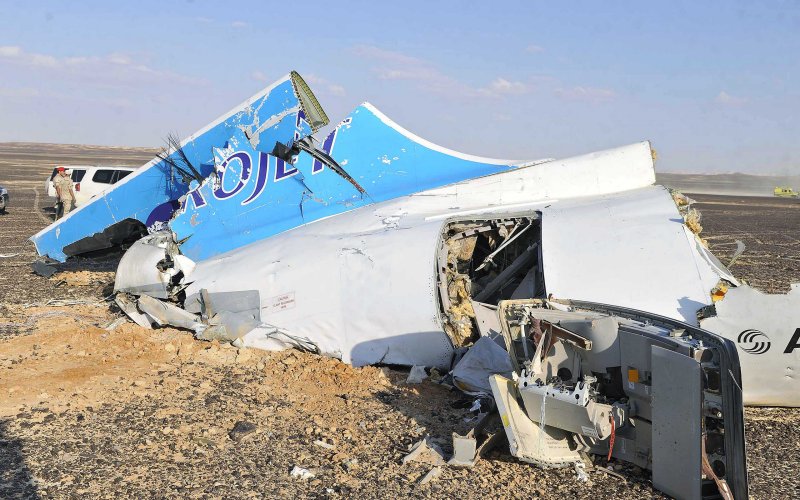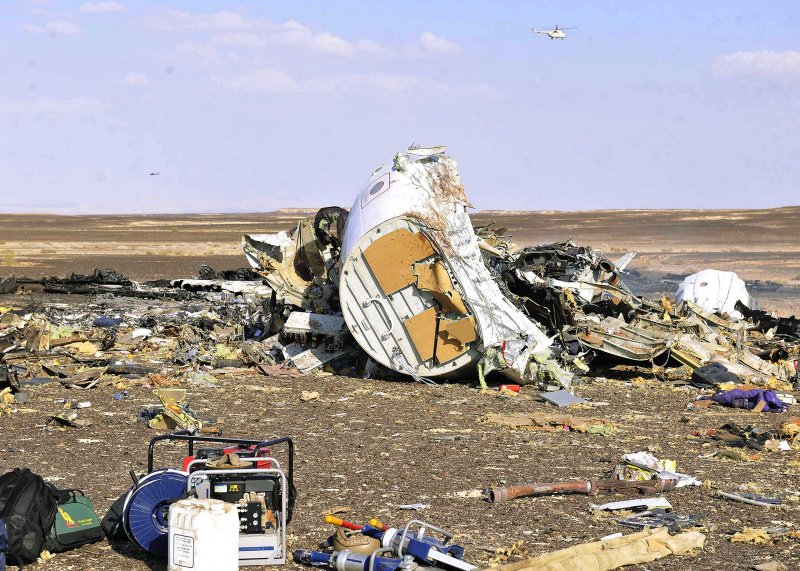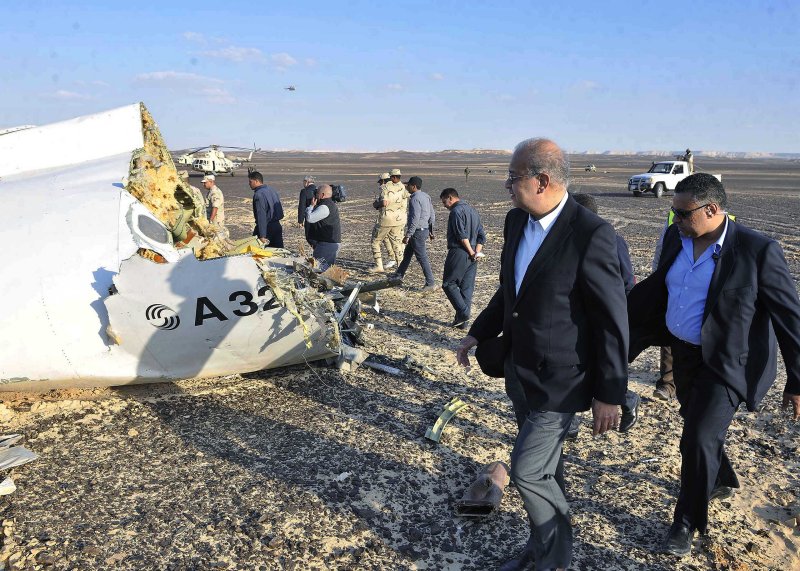
The suddenness of what happened to the Russian-operated jet that crashed in the Sinai is highly unusual. According to reports the pilot had reported a technical problem and a diversion to the nearest airport. But the problem was apparently so severe that his plan was overtaken by events and the airplane literally fell out of the sky from its cruise altitude of 31,000 feet.
In theory the Sinai is dangerous air space. Much of the Sinai is a closed military zone where the Egyptian army has frequent skirmishes with Islamic terrorist groups. There have been claims by a jihadist group linked to ISIS that it brought down the flight, but the airplane's altitude put it well beyond the range of shoulder-fired anti-aircraft missiles, or MANPADS, the only relevant weapon fielded by such groups, and first pictures of the wreckage offer no evidence of a missile strike.
Instead investigators will treat as much more credible the possibility of a sudden structural failure. The Airbus A321 was 18 years old, but with a modern airplane like this and regular maintenance that is not in itself a cause for concern.
What does, however, jump out from this particular airplane's record is an accident that it suffered on November 16, 2001 while landing at Cairo (while owned and operated by Middle East Airlines). As it touched down the nose was pointing at too high an angle and the tail hit the tarmac - heavily enough to cause substantial damage.
Tail strikes like this are not uncommon. The airplane was repaired and would have been rigorously inspected then and during subsequent maintenance checks. Nonetheless investigators who will soon have access to the Airbus's flight data recorder will take a hard look at what is called the rear pressure bulkhead, a critical seal in the cabin's pressurization system. Images from the wreckage in the Sinai show parts of the tail and rear fuselage near the site of this bulkhead lying clear of the rest of the debris, suggesting a possible break-up in flight.

Lufthansa and Air France have announced that they will no longer fly over the Sinai, even though this disaster is almost certainly not a terrorist act.

Since Malaysian Flight MH17 was brought down by a missile strike over Ukraine, the main flight corridors between Europe, the Middle East, and Asia have been changed to avoid war zones.

Until now the Sinai has not been treated as a war zone, but clearly some airlines are now going to give it a miss. Those that have regular tourist-popular routes into Sharm el-Sheik, like British Airways and Ryanair, have said that they will continue to fly into the southern Sinai. And there is no evidence from the tragedy of the Russian Airbus to suggest that they are wrong.



The proposed cause is very unlikely. Even if there was any residual damage from an accident 14 years ago, the aircraft was in a phase of flight with minimal airframe stress. Most stress occurs in the takeoff and landing phases; not as the aircraft is in its cruise phase. If any structural weakness remained it would have been expressed much earlier than 14 years later and in much higher stress phases of flight.